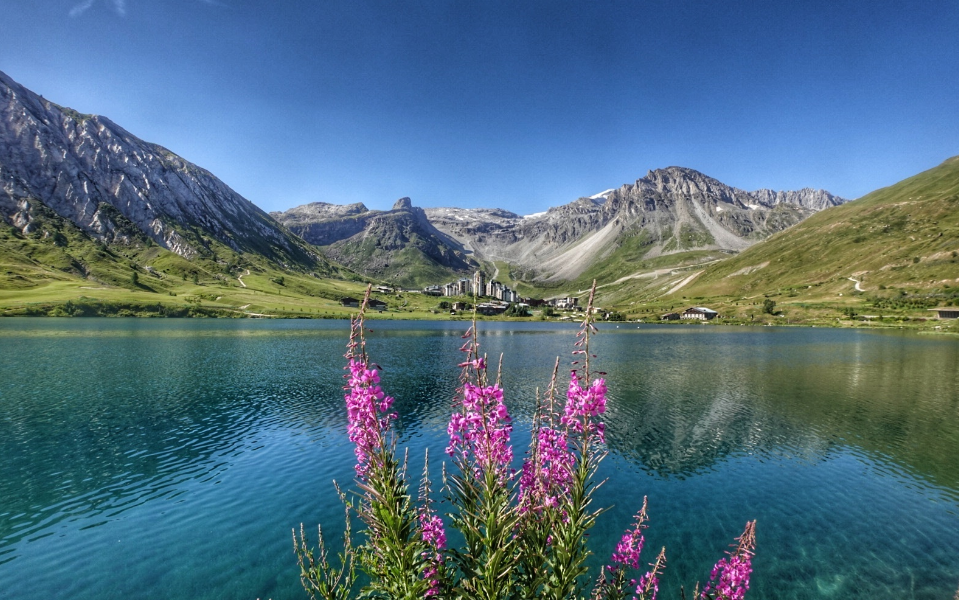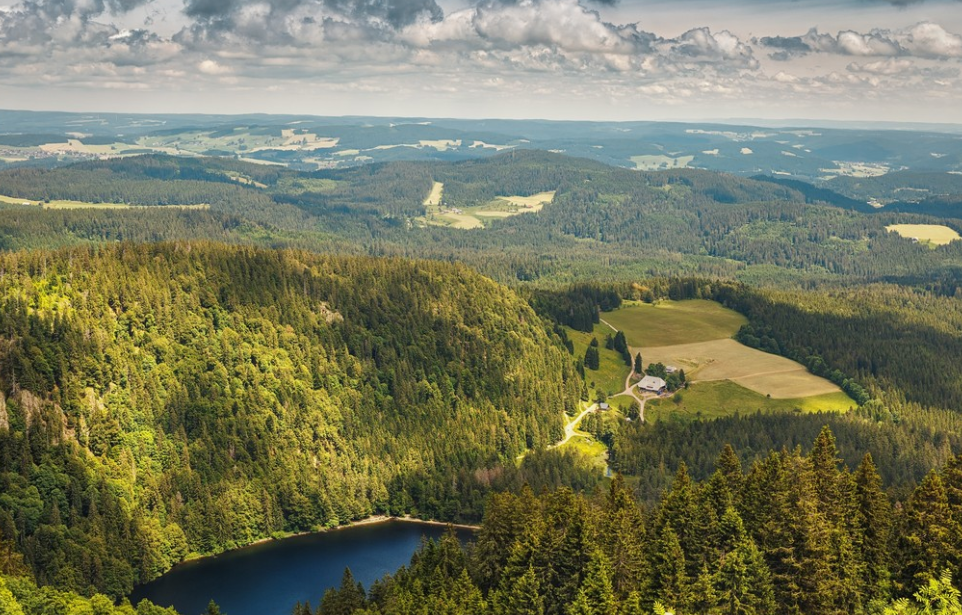Let’s talk about Belgium National Park. Belgium, known for its rich history, charming cities, and cultural heritage, also boasts breathtaking natural landscapes. One such gem is Hoge Kempen National Park, a haven of biodiversity nestled in the northeastern part of the country. In this article, we will explore the wonders of Hoge Kempen National Park, from its location and features to its history, activities, and sustainable practices. So put on your hiking boots and let’s embark on an adventure through the pristine wilderness of Belgium’s largest national park.
Belgium, a small country in Western Europe, is renowned for its medieval towns, delicious chocolate, and world-famous beers. However, beyond the bustling cities and quaint villages, lies a hidden natural paradise: Hoge Kempen National Park. Situated in the province of Limburg, this vast protected area covers over 57 square kilometers and offers a diverse range of landscapes and ecosystems.
Location and Features of Belgium National Park
Geographic location
Hoge Kempen National Park is strategically located in the northeastern part of Belgium, close to the border with the Netherlands. Its proximity to major cities like Brussels, Antwerp, and Maastricht makes it easily accessible for both locals and tourists seeking an escape into nature.
Size and landscape
Spanning an impressive area of over 57 square kilometers, Hoge Kempen National Park is Belgium’s largest national park. The park encompasses a variety of landscapes, including heathlands, pine forests, and picturesque lakes. The undulating terrain adds to the park’s scenic beauty and offers stunning panoramic views from its highest point, the Signal de Botrange.
Flora and fauna diversity
Hoge Kempen National Park is a haven for plant and animal species. The park’s diverse habitats support a wide range of flora, including heather, bilberry, and orchids. Visitors can witness the vibrant colors of these plants during the blooming season.
History and Significance of Belgium National Park
Establishment of the national park
Hoge Kempen National Park was officially established in 2006 with the goal of preserving and protecting the unique natural heritage of the region. The park’s creation was a collaborative effort between the government, local communities, and environmental organizations. It serves as a testament to Belgium’s commitment to environmental conservation and sustainable development.
Historical and cultural importance
Beyond its natural beauty, Hoge Kempen National Park holds significant historical and cultural value. The park’s landscapes have been shaped by centuries of human activity, including mining and agriculture. Historical artifacts and remnants of the region’s industrial past can still be found within the park, providing a glimpse into its rich heritage.
Conservation efforts and achievements
Since its establishment, Hoge Kempen National Park has made significant strides in conservation. The park has implemented various initiatives to protect its fragile ecosystems and promote sustainable practices. These efforts include habitat restoration, species reintroduction, and the establishment of ecological corridors to facilitate wildlife movement. Through these endeavors, the park has successfully preserved its biodiversity and created a sustainable environment for future generations.
Activities and Attractions
- Hiking and nature trails
- Cycling and mountain biking
- Wildlife observation
- Picnic areas and recreational facilities
Visitor Information for Belgium National Park
Park entrance and opening hours
Hoge Kempen National Park has multiple entrances, each providing access to different sections of the park. Visitors can obtain detailed information about the park’s entrances, including maps and parking facilities, from the official park website or visitor centers.
The park is open throughout the year, allowing visitors to experience its beauty in every season. However, it’s important to note that certain facilities, such as visitor centers or guided tours, may have specific operating hours or seasonal availability.
Accommodation options
While Hoge Kempen National Park does not offer on-site accommodation, there are various lodging options available in the surrounding areas. Visitors can choose from hotels, bed and breakfasts, or self-catering cottages, depending on their preferences and budget. It is advisable to book accommodation in advance, especially during peak seasons, to ensure availability.
Visitor centers and guided tours
Hoge Kempen National Park features several visitor centers that provide valuable information, interactive exhibits, and educational programs. These centers serve as a gateway to the park, offering insights into its history, ecology, and conservation efforts. Guided tours led by knowledgeable park rangers are also available for those who want a more immersive and informative experience. These guided tours provide in-depth knowledge about the park’s flora, fauna, and cultural heritage, enhancing visitors’ understanding and appreciation of Hoge Kempen National Park.
Sustainable Practices and Conservation Efforts in Belgium National Park
Conservation initiatives
Hoge Kempen National Park is dedicated to preserving its natural resources and minimizing its ecological footprint. The park actively engages in habitat restoration, invasive species management, and monitoring of sensitive ecosystems. By implementing sound conservation practices, the park ensures the long-term survival of its diverse flora and fauna.
Protection of endangered species
The park plays a vital role in the conservation of endangered species. It provides a safe haven for rare and threatened animals and plants, including the European wildcat, the black grouse, and various orchid species. Through targeted conservation efforts, Hoge Kempen National Park contributes to the protection and recovery of these vulnerable species.
Sustainable tourism practices
Hoge Kempen National Park promotes sustainable tourism practices to minimize the impact on the environment and local communities. The park encourages responsible behavior among visitors, such as staying on designated trails, respecting wildlife and plants, and properly disposing of waste. By adopting sustainable tourism principles, the park strives to balance conservation and visitor enjoyment.
FAQs
- How do I get to Hoge Kempen National Park?
Hoge Kempen National Park can be reached by car, with ample parking available at various entrances. Public transportation options, such as buses or trains, may also be available to certain entrance points. Detailed directions and transportation information can be obtained from the official park website.
- Are pets allowed in the park?
Yes, pets are allowed in Hoge Kempen National Park. However, they must be kept on a leash at all times to ensure the safety of wildlife and other visitors. It’s important to clean up after your pet and dispose of waste properly.
- Are there camping facilities available?
While camping is not permitted within Hoge Kempen National Park, there are camping sites and facilities available in the surrounding areas. Visitors can choose from a range of campgrounds and caravan parks nearby, allowing them to enjoy a camping experience while exploring the park during the day.
- Can I fish in the park’s lakes and rivers?
Fishing is allowed in certain areas of Hoge Kempen National Park, subject to specific regulations and permits. It is important to check with the park authorities for the designated fishing spots, rules, and any restrictions that may be in place to ensure the sustainability of aquatic ecosystems.
- What is the best time to visit the park?
Hoge Kempen National Park offers something unique and beautiful in every season. Spring brings vibrant blossoms and blooming flowers, while summer offers pleasant weather for outdoor activities. Autumn paints the park in stunning hues of red and gold, and winter transforms the landscape into a snowy wonderland. The choice of the best time to visit depends on personal preferences and desired experiences.
Conclusion
In the heart of Belgium, Hoge Kempen National Park stands as a testament to the country’s commitment to preserving its natural heritage. This sprawling landscape of heathlands, forests, and lakes offers visitors a chance to immerse themselves in the wonders of nature while engaging in various outdoor activities. Whether it’s hiking through picturesque trails, cycling along scenic paths, or observing diverse wildlife, Hoge Kempen National Park has something to offer everyone.
With a rich history and cultural significance, the park invites visitors to explore not only its natural beauty but also the remnants of the region’s industrial past. Educational programs, guided tours, and research collaborations further enhance the visitor experience, providing insights into the park’s ecological importance and conservation efforts.
References:
- Hoge Kempen National Park. (n.d.). Retrieved from https://www.nationaalparkhogekempen.be/en
- Visit Flanders. (n.d.). Hoge Kempen National Park. Retrieved from https://www.visitflanders.com/en/things-to-do/nature/hoge-kempen-national-park/index.jsp
- National Parks Europe. (n.d.). Hoge Kempen National Park. Retrieved from https://www.nationalparkseurope.com/national-parks/hoge-kempen-national-park/

